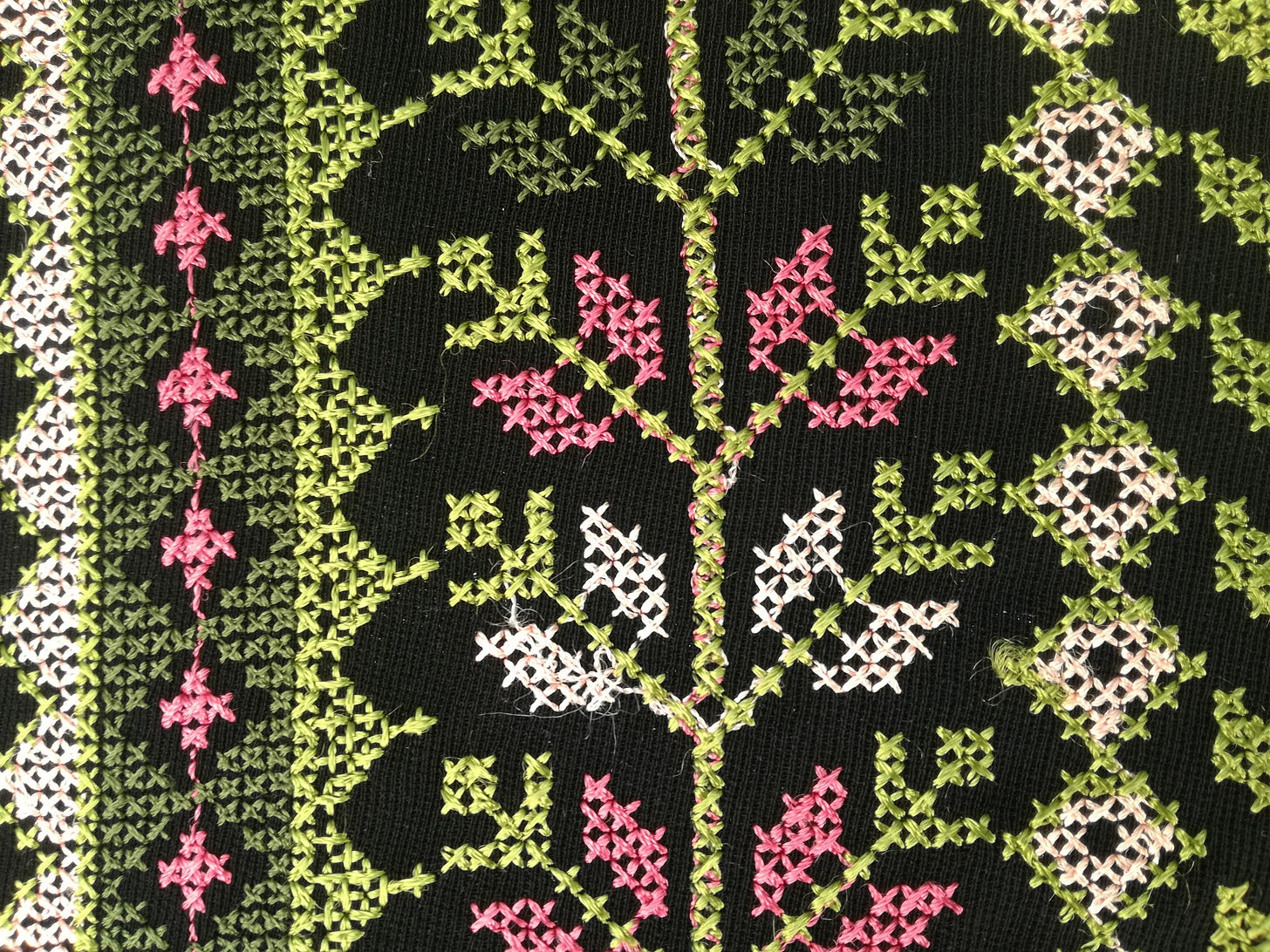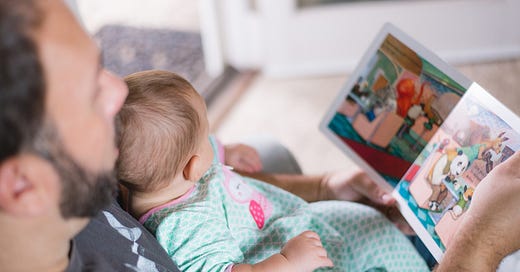Building A Bridge for Arabic Children's Literature
Getting children to embrace the rich tapestery of Arabics is key to promoting literacy and reading among children in all varities of Arabic - especially Fusha
It’s not a lack of competence. I’ve been doing this for at least 25 years, yet here I am struggling to get started. It can’t be anxiety. The audience consists of an overly eager but clueless 9-month old. She’d have no clue if I got any of this “right”. Yet, here I am: at 33 years of age, unsure how to start reading to her.
Reading Arabic books to your children can sometimes feel like an exercise in existence - an act of preservation or revival. For what are we as Arabs, without Arabic? This simple act feels like it might as well determine the survival of a culture, of a civilization. Which Arabic do I read to her in? This is a question many parents of Arabic-speaking children struggle with. Reading children’s books should be child's play, but in Arabic it's a bit more complicated.
Arabic speakers operate in a linguistic duality with two distinct but related language varieties in their daily lives. Native speakers use a spoken, or colloquial, variety (often called a dialect) at home (and overwhelmingly on social media) but revert to a sanctioned version (known as Modern Standard Arabic (MSA) or Fusha) for reading and writing in more formal settings.
This duality presents a particularly thorny issue around children’s literature. Practically and neurologically, the local dialect (or colloquial Arabic) is the child’s mother tongue. It’s the medium through which they start in the world. Yet, very little is actually written in dialect today and the self-proclaimed guardians of the Arabic language have worried for centuries that the dialects are “eroding” the purity of the more formal Arabic (MSA). In their attempt to “protect Arabic” they have vilified and attempted to suppress Arabic dialects and shamed those that promote them.
The great irony in this fabricated adversity between the varieties of Arabic might lie in the fact that saving “Arabics”, if they need saving at all, lies in acknowledging the richness of the language and building bridges across the different varieties. It lies in moving away from thinking of it as a spectrum of “poor” to “good” Arabic and thinking more deeply about the rich tapestry of the Arabic language as a literal manifestation of the richness and diversity of the region itself. It lies in imagining the future of a region where people master multiple dialects as well as MSA. The Quran itself, considered the pinnacle of Arabic purity and eloquence, generously adopted and included words from a variety of languages across North Africa and West Asia.

The bridge across the Arabics should rest on at least 2 key foundations. First, we need to make children aware and proud of their variety of Arabic and highlight to them key differences between it and MSA. Research is clear that only when children have a clear understanding of the landscape - especially the part of the bridge they are on, understand its value, and how it differs from the proverbial destination that they can move across the bridge freely, powerfully and proudly. If our ultimate goal is proficiency in MSA, then mastering the child’s Arabic dialect is the first step.
Second, we should reduce parents' anguish around reading children’s books and make the transition easier: children’s books should be written using shared vocabulary and structures between the relevant dialect and MSA. This will vary across the region but has been done already with good success in Arabic and ample examples exist in other languages. These resources need to be made readily and easily available to parents so they can create rich literary environments for their children.
In 1290, the Arabic lexicographer Ibn Manzur opened his 20-volume Arabic dictionary, Lissan Al Arab, by bemoaning the impending dangers surrounding the Arabic language. In this introduction, he cites as his motivation for compiling his magnum opus as his concern for the survival of a language being assaulted from all sides.
In 1288, two years before the publication of Lissan Al Arab, Ibn Al Nafis passed away having published 80 volumes of his own Arabic magnum opus Al-Shamil fi al-Tibb (The Comprehensive Book on Medicine). Ibn Al Nafis had planned to publish 300 volumes, but passed away before being able to complete his vision. Nevertheless, Al Shamil fi Al-Tibb rose up to its name and is still considered one of the largest medical encyclopaedias written by a single person to this date.
The Arabic language did not need saving in 1290, and does not need saving today. It is alive and well. It is our children that need help in finding a bridge to a rich and diverse tapestry of Arabics. Providing them with this bridge will only enrich their present by helping them better connect to their past, and move confidently into the future.
Now where was I, yes.. “Laila’s Bus has big round wheels…
Thank you to the 40 new subsribers that joined us since the last post in November. If you’ve enjoyed this post please subscribe below and help me spread the word by sharing it with your firends.
If you have any thoughts and comments please reach out in the comments below or on twitter @ndakkak.




Thank you for this piece. And it's funny how "language saviors" existed all the way back in the 13th century.